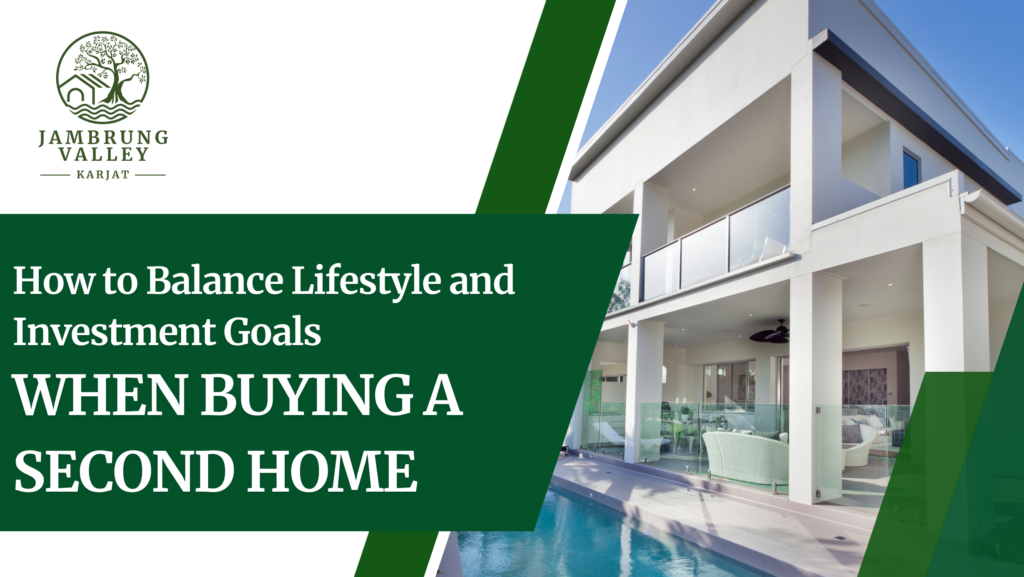
Purchasing a second home is a significant decision, one that often combines both lifestyle desires and financial investment goals. While you may dream of a getaway retreat or a vacation property, it’s also crucial to consider how your second home can serve as a smart investment for the future. Striking the right balance between enjoying your new home and maximizing its potential as an investment can be challenging but achievable with careful planning.
Define Your Lifestyle Needs
Before diving into the financial aspects, it’s essential to clarify what you want from your second home in terms of lifestyle. Do you envision using the property primarily for family vacations, weekend getaways, or long-term stays? Perhaps you’re looking for a place that offers specific amenities, like proximity to the beach, mountains, or a golf course.
Ask yourself:
- How often will you use the property?
- What activities or experiences do you want nearby?
- Is this a place you plan to retire in eventually?
Understanding your lifestyle preferences will help you narrow down the type of property and location that best suits your desires while also considering its investment potential.
Evaluate Market Appreciation Potential
While it’s important to find a home that fits your lifestyle, it’s equally critical to assess the property’s investment potential. Consider buying in areas that have strong market appreciation trends. Properties in regions with growing economies, infrastructure development, or increasing tourism are more likely to gain value over time.
Look for factors like:
- Planned infrastructure projects (new roads, airports, public transport)
- Economic growth and job creation in the area
- Tourism potential and demand for short-term rentals
Balancing personal enjoyment with the potential for property appreciation will allow you to maximize the value of your second home over time.
Align Your Financing Strategy with Goals
Your financing strategy should align with both your lifestyle and investment goals. For instance, if your primary aim is to build equity and increase property value over time, consider making a larger down payment or opting for a shorter mortgage term. This allows you to build equity faster and reduces the total interest paid over the life of the loan.
Alternatively, if your primary focus is on enjoying the property and keeping monthly payments low, a traditional 30-year mortgage may be more suitable. Balancing these options requires a clear understanding of your long-term financial goals.
Evaluate Ongoing Costs and Maintenance
Second homes come with ongoing costs and maintenance, which can quickly add up if not planned for. From property taxes and insurance to routine upkeep, you’ll need to factor these expenses into your decision-making process. While lifestyle homes may prioritize luxury and convenience, investment-focused properties may need more emphasis on cost efficiency and durability.
Ensure that the property’s maintenance demands align with your lifestyle. For example, a mountain cabin might require more upkeep in the winter months, while a beachfront property might need regular maintenance to withstand coastal weather conditions.
Choose the Right Location
Location is a key factor in balancing lifestyle desires with investment goals. The right location ensures that you enjoy the property while also ensuring future returns.
Consider:
- Proximity to your primary residence: If you plan to use the home frequently, a property within driving distance may be more practical.
- Tourist demand: If rental income is important, choose a location that attracts visitors year-round.
- Long-term development: Look for areas with growth potential or upcoming infrastructure projects that could enhance property values.
Balancing location with accessibility and market demand ensures that you enjoy the property while making a sound financial investment.
Plan for Long-Term Appreciation
When buying a second home, think about the long-term appreciation of the property. Some homes in established vacation destinations might be priced higher but appreciate more slowly, while properties in up-and-coming areas could offer higher growth potential.
If you’re prioritizing appreciation, consider properties in areas that are on the rise due to new developments, urban expansion, or increased tourism interest. These areas can provide significant growth over time, even if they require some initial compromises on lifestyle conveniences.
Work with a Real Estate Professional
Balancing lifestyle and investment goals requires expert advice. Real estate agents with local knowledge can provide insights into both current market trends and future development plans. They can help you identify properties that meet both your personal and investment objectives.
Additionally, working with a financial advisor can help you navigate the financing and tax implications of owning a second home, ensuring that you make decisions that align with your broader economic strategy.
Jambrung Valley is appealing because of its beautiful scenery, calm surroundings, and developing infrastructure, making it a good spot for those looking for a peaceful retreat and also for those who want to invest in property. Whether you’re looking for a place to relax on weekends away from the city or aiming to benefit from increasing property values, the valley offers a combination of personal satisfaction and financial growth.



